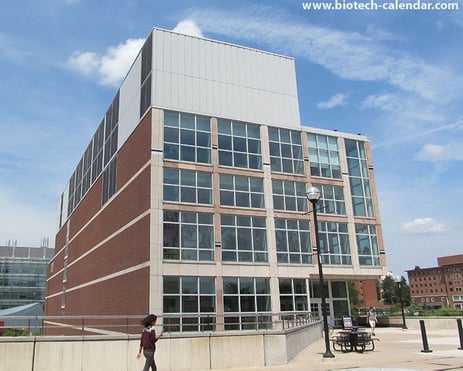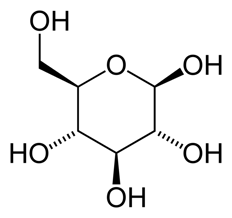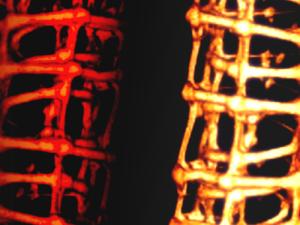Federal funding was recently provided to the University of Michigan in an effort to understand and prevent the occurrence of harmful algal blooms that fatefully impact freshwater globally. The $5.2 million federal grant supporting this algal bloom research project is part of the $1.5 billion in total annual research and development funding received by the university.

While the major effects of these destructive algal blooms are not well understood they came under greater investigation when in 2014, the town of Toldeo, Michigan’s local water supply was contaminated as a result of an algal bloom in Lake Erie. The intention of project researchers is to increase and expand understanding of the toxins and chemical compounds associated with algal blooms and how they effect public health.
Read More
Tags:
water,
Biochemistry,
University of Michigan Ann Arbor,
public health,
National Science Foundation,
BioResearch Product Faire™,
top funded,
global health

A team of biochemists at UCLA have created a novel system of converting glucose into highly useful chemical compounds, such as those needed to create biofuels and pharmaceuticals. Previous research endeavors relied on using cells to convert sugar into desired compounds. This has been difficult to achieve because cells would rather use sugar for their own natural uses, such as building proteins and cell walls. The UCLA biochemists have recently developed a way to achieve the conversion of glucose into desired compounds- without using cells.
Read More
Tags:
CA,
University of California Los Angeles,
Los Angeles,
Biochemistry,
chemistry research,
Chemistry,
LAVS,
UCLA,
Biotechnology Vendor Showcase,
2016,
Western,
glucose
It seems we can get oil from any number of unlikely substances these days, and a joint biofuel research team from Texas A&M and Cornell is trying to do just that. With a $2M grant from the NSF, researchers are studying how to extract the naturally-produced oil from algae. So next time you look at a green swimming pool, consider that a similar muck just might be able to fuel your car. Algae is an eukaryotic organism that is photosynthetic and generally aquatic, and it comes in a wide variety of forms. It can be a very small single cell organism like B. braunii or a very large multi-cellular organism like kelp. It fact algae is one of the newest and most promising subjects of research in the quest for biofuels.
Tags:
Cornell University,
biofuels,
Texas A&M University,
Texas,
Southwest,
2012,
Biochemistry,
College Station,
TAMU,
BioResearch Product Faire Event,
Energy,
TX,
BRPF
It takes a long time for a lab science building to go from planning and fundraising, through permitting and construction and on to occupancy. In the case of the
University of Washington's
Molecular Engineering and Sciences Building, which is celebrating its
grand opening next week, that process took 5 years and had some unexpected perks. While there's been very little upside to the down economy since 2008, it has had the effect of lowering construction costs, which means that UW Seattle's newest science building is even bigger and better than they'd originally planned because they were able to get more for their
$77M.
One of the things they got was some very thoughtfully designed labs. Though flexibility of design is important to assure future utility, research team leaders gave significant input into the design of their specific labs to make sure those labs were ideal for the type of research that would be carried out within their walls. Project architect Tim Williams, of Zimmer Gunsul Frasca, said in an interview:
“Scientists spend a lot of time in the lab. The UW faculty wanted to look at how we could make that a nicer place to be."
Here are some of the ways they made a nicer science lab building:
 5-story, 90,300sf structure
5-story, 90,300sf structure- Each of the four above-ground floors is divided into a laboratory half and an office half
- The basement is a 28,000sf low-vibration lab space
- Houses more than 15 faculty, 3 research centers and 4 major instrumentation centers
- Aluminum-plate shielding on the building guards against electromagnetic waves
- Natural ventilation in office spaces provided by windows that open
- Optimized ventilation in the lab spaces, replacing air 6 times per hour rather than 10
- Innovative commons spaces
- Green roof gardens
UW officials are proud of the new building, not just because it is state-of-the-art, but also because it's "state-of-the-science." Molecular engineering is a relatively new field, and the UW Molecular Engineering and Sciences Institute (MOLES, the building's primary occupant) sees its mission as exploring a new kind of engineering for the 21st Century: rather than build bridges over rivers (still a noble feat), the new molecular engineer may be building proteins that travel to specific parts of the body. He or she may follow the latest developments in chemistry, biology, physics, nanotechnology and predictive modeling; and his or her research projects will often be interdisciplinary, with colleagues from diverse fields and perhaps different institutions.
Furthermore, if life scientists often pursue basic research to understand the building blocks of life, and engineers build things and occupy themselves with practical mechanics and physical principles, the fusion of the two should have tremendous translational potential. Such is the goal of MOLES and their new collaborative workspace. Per their website:
Research at the Institute for Molecular Engineering & Sciences will be evolvable and dynamic, focusing initially on the themes of CleanTech and BioTech.

Some of the faculty scientists who will be doing research in the new MOLES facility include:
(Dr. David Baker seems to come up in our blog series with regularity. For former blogs citing his work, read the following:)
Computational Biology Scientist at UW Develops New Protein Structure
Crowdsourcing Research Challenge by UW Scientists a Game Changer?
Biotechnology Calendar, Inc. will hold 3 professional tradeshow events focusing on Washington state's bioscience technology and the research partnerships between scientists and the science equipment industry next month on these dates:
For information on exhibiting at the University of Washington show in particular, and receiving a university research funding report, click here:

Biotechnology Calendar, Inc. is a full service event marketing and planning company producing on-campus, life science research tradeshows nationwide for the past 20 years. We plan and promote each event to bring the best products and services to the best research campuses across the country.
Tags:
Bioscience research,
CEEM,
UW,
Molecular Engineering,
University of Washington,
Northwest,
WSU,
New research facilities,
2012,
Biochemistry,
chemistry research,
Engineering,
Front Line event,
Energy,
Seattle,
new construction,
construction
 It's getting to the point where there's less and less relevant distinction to be made between life science and physical science research. It was clearer when one lab had petri dishes and the other had circuitboards, but what happens when you have both? That's the case in the Harvard University labs of chemist Charles Lieber and his medical school colleague Daniel Kohane, where the bio research team has successfully created living tissue embedded with tiny nanowires capable of running an electrical current so subtle that it does not harm the tissue cells. These 3D bioelectronic structures could potentially both relay complex information about what's going on inside the tissue and receive signals from an outside source such as instructions for repairs. Several news outlets are calling it cyborg tissue and envision its future use in implants, prosthetics, or even some kind of therapeutic microbot. More immediately it will most likely be used for drug testing in labs, as a precursor to animal or human trials.
It's getting to the point where there's less and less relevant distinction to be made between life science and physical science research. It was clearer when one lab had petri dishes and the other had circuitboards, but what happens when you have both? That's the case in the Harvard University labs of chemist Charles Lieber and his medical school colleague Daniel Kohane, where the bio research team has successfully created living tissue embedded with tiny nanowires capable of running an electrical current so subtle that it does not harm the tissue cells. These 3D bioelectronic structures could potentially both relay complex information about what's going on inside the tissue and receive signals from an outside source such as instructions for repairs. Several news outlets are calling it cyborg tissue and envision its future use in implants, prosthetics, or even some kind of therapeutic microbot. More immediately it will most likely be used for drug testing in labs, as a precursor to animal or human trials.
Tags:
Northeast,
MIT,
cell biology,
2012,
Biochemistry,
Massachusetts,
biorobotics,
Cell Research,
chemistry research,
bioprinting,
Boston,
BioResearch Product Faire Event,
MA,
Harvard,
Harvard Medical School
 The big, shiny black solar panels you're used to seeing bolted onto south-facing rooftops may soon be obsolete, if researchers at UCLA's California NanoSystems Institute continue to advance solar nanoscience at their current lightspeed pace. In fact, you not only won't recognize the new technology, you won't even be able to see it -- because it will be virtually transparent. And instead of being mounted to the roof, these thin plastic flexible sheets will cover your windows and skylights, as well as smaller surfaces like the face of your smartphone or tablet. What if the sun's not shining brightly? No problem, because these polymer solar cells (PSCs) absorb mostly ultra-violet and near-infrared (NIR) light, rather than the visible light that more traditional solar technology relies upon.
The big, shiny black solar panels you're used to seeing bolted onto south-facing rooftops may soon be obsolete, if researchers at UCLA's California NanoSystems Institute continue to advance solar nanoscience at their current lightspeed pace. In fact, you not only won't recognize the new technology, you won't even be able to see it -- because it will be virtually transparent. And instead of being mounted to the roof, these thin plastic flexible sheets will cover your windows and skylights, as well as smaller surfaces like the face of your smartphone or tablet. What if the sun's not shining brightly? No problem, because these polymer solar cells (PSCs) absorb mostly ultra-violet and near-infrared (NIR) light, rather than the visible light that more traditional solar technology relies upon.
Tags:
CA,
University of California Los Angeles,
Photonics,
Solar Energy,
nanotechnology,
California,
2012,
Los Angeles,
Biochemistry,
Engineering,
UCLA,
scientists solutions,
Biotechnology Vendor Showcase,
Photonic Devices,
scientist solutions
An Oregon State University research lab led by Gregory Rorrer has just been awarded a $2M NSF grant as part of the Emerging Frontiers in Research and Innovation (EFRI) program for Engineering projects. Of the 15 ENG/EFRI awards for 2012, 3 were in the category of Synthetic Biorefineries research: "the large-scale use of micro-organisms that harness solar energy to produce chemicals and fuels from carbon dioxide." Rorrer's lab will study diatom photosynthesis as a means of creating biofuel, as well as two other bioengineered products. Diatoms are a type of algae with a unique biosynthetic ability to extract silicate from the ocean to create cell walls of nanostructured silica. According to the grant proposal, the OSU team will identify cellular processes and cultivation strategies towards the design of scalable systems for a future diatom-based photosynthetic biorefinery.
Tags:
Oregon State University,
Northwest,
biofuels,
women in science,
Texas A&M University,
Oregon,
2012,
University of Wisconsin Madison,
Biochemistry,
Front Line event,
OR,
NSF,
Corvalis,
ORSTU
Anyone who's ever pulled an all-nighter to finish a project knows how it wreaks havoc with your metabolism. The fact is, it's not just a nicety to be awake and active during the day and sleep at night: it's the way bodies are hard-wired. Scientists have long-suspected that upsets in a person's biological clock could play a factor in the development of metabolic disorders like diabetes. Now a team of researchers from three Southern California universities has made surprising discoveries that support that hypothesis. Not only have they isolated the protein that regulates the biologic clock (and named it cryptochrome), but they have found a molecule called KL001 that dictates when cryptochrome gets sent to the proteasome recycling bin. Which is to say, they now know a lot more about this complex circadian system that not only tells the body when to sleep and wake, but also how the body should manage glucose levels in those periods of relative activity and dormancy. The bio research study was published in the July 13 advance online issue of the journal Science.
Tags:
CA,
University of California San Diego,
University of Southern California,
Diabetes,
Southwest,
California,
2012,
University of California Santa Barbara,
USC,
Los Angeles,
Biochemistry,
Scripps,
biology research,
bio research,
Front Line event,
NSF
Washington University in St Louis (WUSTL) has just received a $2M research grant that will go towards combating a disorder which afflicts, often fatally, nearly 5.8 million Americans each year: heart failure. Heart failure is one of the leading causes of death in the US and although many promising drugs have been introduced over the years, we have yet to find a definitive treatment for the variety of cases that doctors encounter. This $2M NIH award wil go to a team of WUSTL scientists for basic research that will contribute to our understanding of heart disease and ideally lead to more effective treatment. The end goal of this research project is the design and construction of artificial tissue models of the heart, which will allow scientists to more quickly and efficiently test new drugs.
Tags:
Bioscience research,
Midwest,
biomedical sciences,
biomedical research,
Bioresearch,
Washington University,
Missouri,
WUSTL,
heart disease,
2012,
Biochemistry,
BioResearch Product Faire Event,
Research,
NIH,
MO,
St Louis,
BRPF,
basic research funding
Sometimes it makes more sense to start from scratch and get it right than to try and retrofit and modernize older lab buildings. That's just what Ohio State University in Columbus decided to do for its Chemical and Biomolecular Engineering and Chemistry Building (CBEC). The new 225,000 gsf lab building broke ground last month and will replace 4 older facilities that had deferred maintenance and lacked proper floor-to-floor height, structural dimensions, and environmental stability. The New Koffolt Laboratories will be LEED-certifiable (possibly Silver) and will constitute a substantial upgrade with their science wet labs, computational research spaces, shared core laboratories, instructional spaces, and offices. The $126M project is due to be completed in September 2014.
Tags:
Midwest,
Ohio State University,
Ohio,
Bioresearch,
University of Cincinnati,
New research facilities,
new science wet labs,
2012,
Biochemistry,
bio research,
BioResearch Product Faire Event,
Cincinnati,
research laboratories,
Columbus,
OH,
new construction,
BRPF,
OSU,
UC








